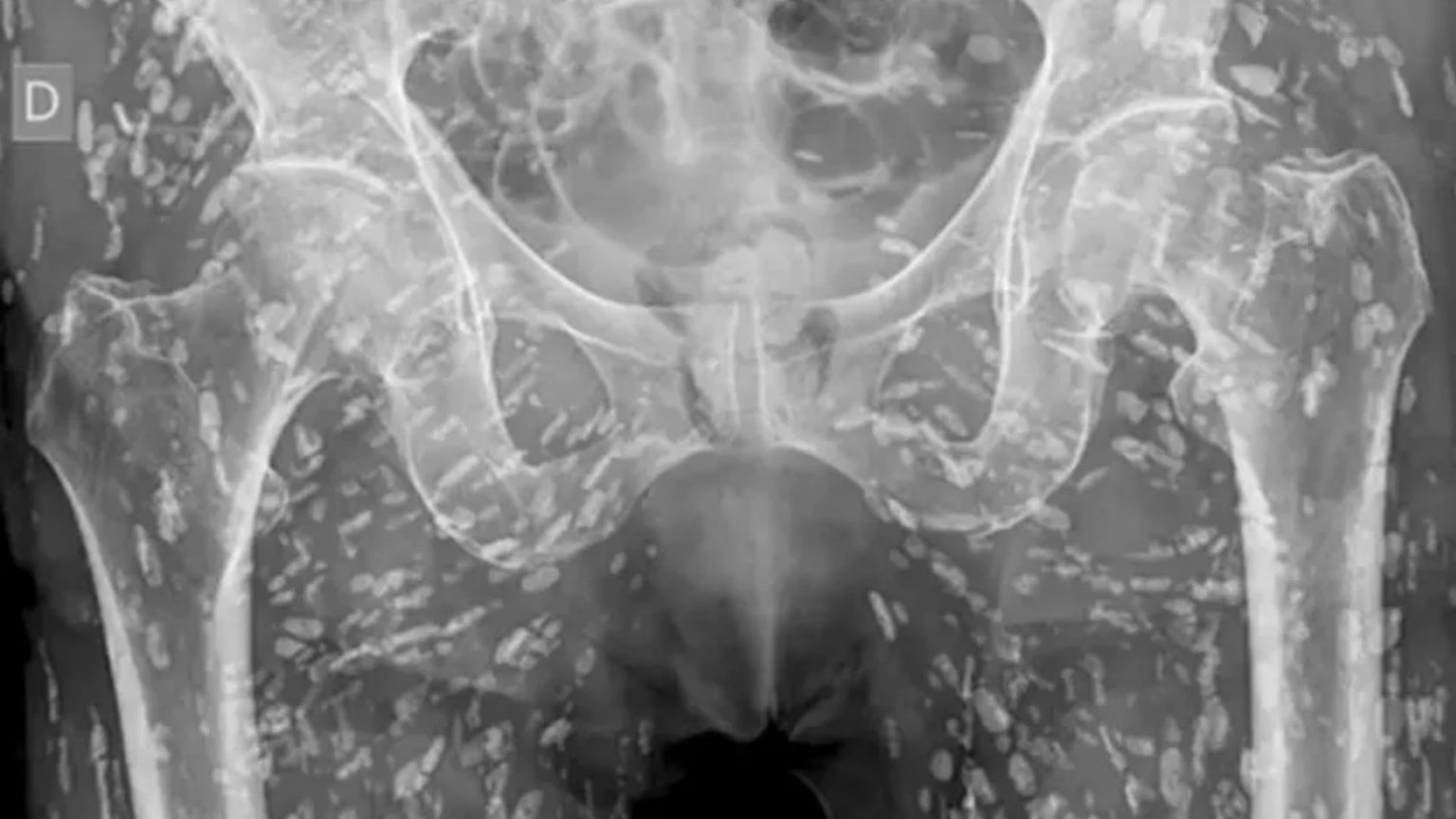This case underscores the critical importance of food safety, particularly when dealing with pork products. The man’s affliction, cysticercosis, arose from the ingestion of tapeworm eggs present in raw or undercooked pork. These eggs hatch into larvae within the human digestive system and can migrate throughout the body, forming cysts in various tissues and organs, including muscles and the brain. While the man in this instance experienced cysts in his hips and legs, revealed incidentally through an X-ray for a hip fracture, the potential for far more severe consequences exists. Had the cysts migrated to his brain, the resulting neurocysticercosis could have led to debilitating neurological symptoms and even death. This case serves as a stark reminder of the hidden dangers lurking in improperly prepared food and the crucial role of thorough cooking in mitigating such risks.
The X-ray image, described as “insane” by a US doctor, vividly depicts the extent of the infestation, with numerous cysts scattered throughout the man’s hip and leg muscles. This visual representation powerfully highlights the potential for widespread tissue invasion by these parasitic larvae. While the cysts in this case did not pose an immediate life-threatening risk, the potential for severe complications, particularly if the cysts had reached the brain, underscores the gravity of the situation. The man’s fortunate escape from more serious consequences should not diminish the alarming nature of this parasitic infestation and the critical need for preventative measures.
The case echoes another incident involving a 52-year-old man in Florida who suffered severe headaches and was subsequently diagnosed with neurocysticercosis, a condition caused by tapeworm cysts in the brain. This man, a regular consumer of “soft bacon,” had unknowingly ingested tapeworm eggs, highlighting the insidious nature of this infection. The Florida case, deemed “very rare” by medical professionals, underscored the importance of proper cooking practices, even in developed countries where such infections are considered uncommon. Both cases emphasize the potential for serious health consequences arising from the consumption of undercooked pork and reinforce the need for vigilance in food preparation.
The transmission of tapeworm eggs occurs through the consumption of contaminated pork products. Pigs can become infected with tapeworm larvae by ingesting contaminated food or water. These larvae then develop into cysts within the pig’s muscles. When humans consume raw or undercooked pork containing these cysts, the cycle continues, with the larvae hatching in the human intestine and migrating to various parts of the body, forming new cysts. This underscores the importance of breaking the cycle of infection by thoroughly cooking pork to kill any potential tapeworm eggs or larvae.
The Food Standards Agency provides clear guidelines for ensuring the safe consumption of pork. These guidelines emphasize the importance of cooking pork thoroughly to eliminate any harmful bacteria or parasites. Using a food thermometer to check the internal temperature of the meat is highly recommended. The thickest part of the meat should reach a temperature that guarantees the destruction of any harmful organisms. Visual cues, such as clear running juices and the absence of pink flesh, can also indicate thorough cooking. Cutting into the meat to ensure it is steaming hot throughout is another important precaution. Adhering to these guidelines can significantly reduce the risk of foodborne illnesses, including cysticercosis.
This case serves as a cautionary tale, highlighting the potential dangers of consuming raw or undercooked pork. The man’s experience emphasizes the importance of food safety practices, particularly when preparing meat products. The potentially devastating consequences of cysticercosis, especially when it affects the brain, underscore the need for vigilance in the kitchen. Thoroughly cooking pork, following established food safety guidelines, and practicing good hygiene, such as regular handwashing, are crucial steps in preventing this debilitating and potentially fatal infection. This case serves as a stark reminder that foodborne illnesses are a serious threat and that preventative measures are essential for protecting public health.




